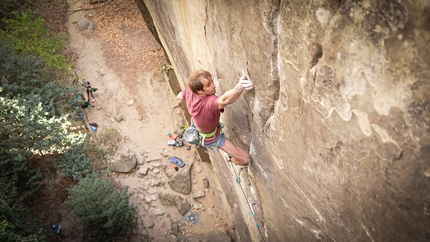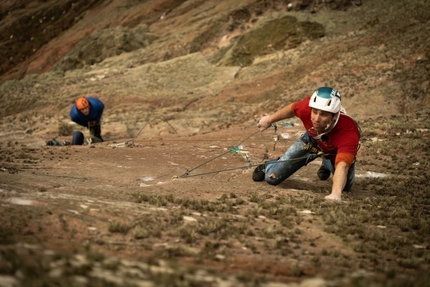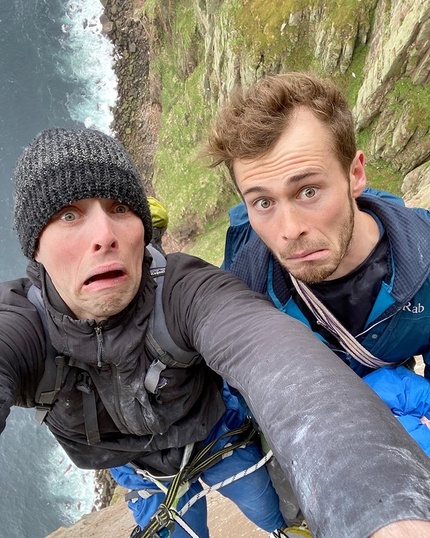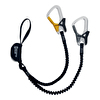Robbie Phillips repeats The Great Arch on the Isle of Pabbay, Scotland
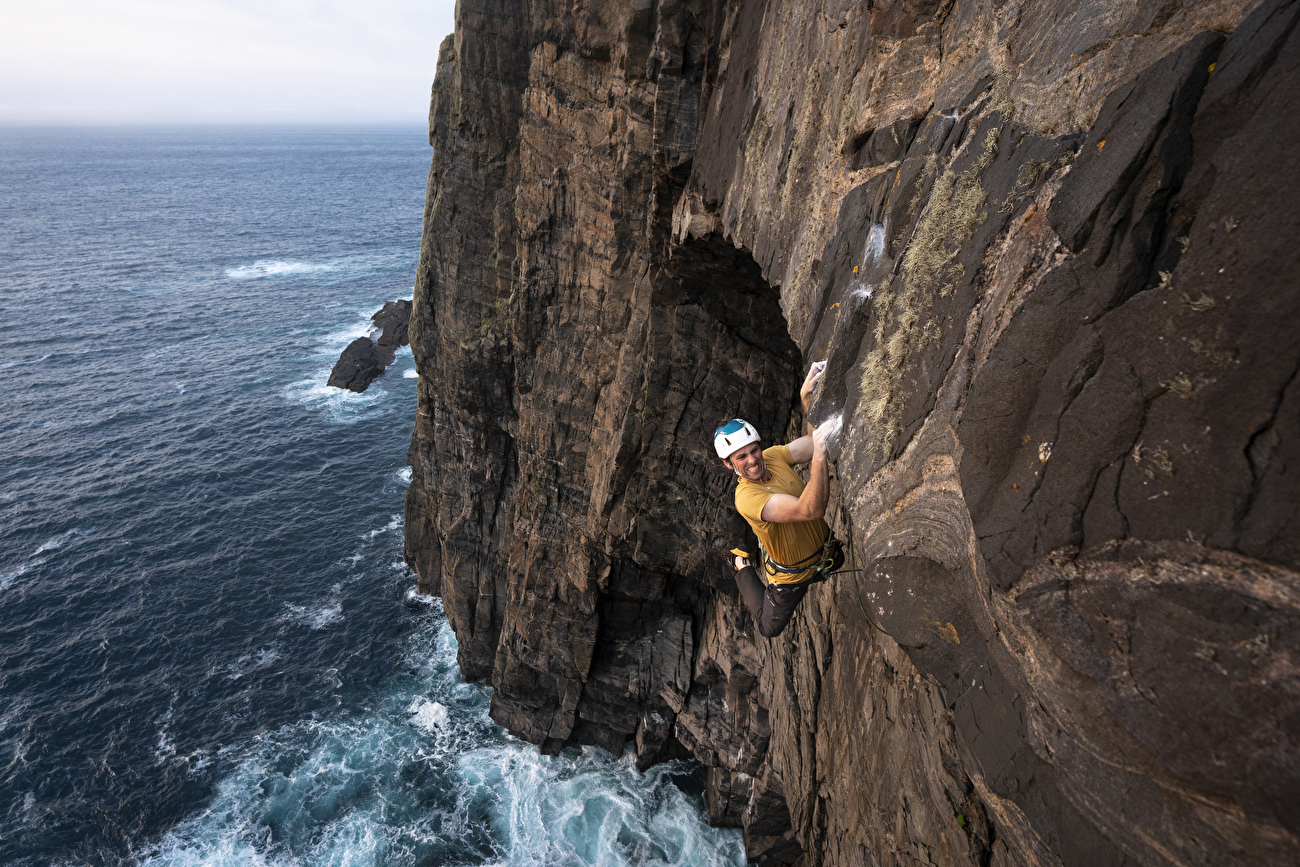
 1 / 4
1 / 4 Ryan Balharry
Ryan Balharry
Scottish rock climber Robbie Phillips has made the first repeat of the notorious Great Arch on the Isle of Pabbay in the Outer Hebrides. The steep and imposing rock face is 100m high and finishes in a dramatic horizontal roof. The climb was only successfully free-climbed in 2013 by fellow Scot Dave MacLeod, and hasn’t seen a successful attempt since.
The climb was famously first attempted in 1996 by Scottish pioneer Dave ‘Cubby’ Cuthbertson and the climbing legend Lynn Hill, who only a couple of years prior had made history with her ascent of ‘The Nose’ in Yosemite. Cuthbertson was the first person to map the route for the climb, which every team since would follow. The pair attempted the climb as part of a BBC documentary called ‘Extreme Climbs’, however the series ended on a cliffhanger as the pair had fallen during their attempt - leaving their free ascent incomplete.
Phillips described the climb, saying “The Great Arch lies on the edge of possibility for climbers. The striking feature is the focal point of the island. It’s also just improbable as a climb - that there’s just enough holds to grab hold of and that the easiest way up is directly through the roof of the arch. When you climb through it, you’re upside down looking out at the Atlantic towards North America.”
Phillips had initially planned his expedition in June, when all previous attempts had taken place, but was forced to reschedule due to bad weather. This change of timing dramatically threatened the potential success of the team.
Phillips explained “You need the long days in the height of summer to give you the biggest window of daylight to attempt the climb. Due to its location the rock suffers from poor conditions from condensation and sea spray, so you need the warm weather and sun to burn off any moisture on the rock. Due to the timing of our trip, we weren’t able to start climbing until 2pm when the sun came round, leaving us only 6 hours to climb the entire wall before we lost the light”.
With only his belay partner, 21-year-old Jamie Lowther, for support during his attempt, it was a race against time to summit before it got dark.
“We climbed fast through the bottom pitches to make up for lost time. I don’t think I’ve ever climbed an E6 onsight (pitch 3) so fast, just placing gear and moving. Occasionally I’d be slowed down by bands of wet overhanging rock, or chossier sections, but ultimately we made up the time and arrived at the crux pitch with a short window of light left”
The crux pitch was famously climbed with two rest points by Cuthbertson and Hill in 1996, which they named “To be continued…” - the roof itself being the barrier to them freeing the climb in its entirety.
Phillips had checked out the last few metres of the roof on a static rope the previous day, akin to Dave Macleod and Steve McClure who had done the same. Phillips remarked:
“I was glad I checked out the roof as it was tricky, complex climbing with blind holds that I would never have known were there otherwise. I figured out a sequence that really worked for me, including a cheeky kneebar that unlocked the crux of the roof.”
On the attempt, Phillips fell at the first crux which he hadn’t tried before, a very tough sequence on burly undercuts and a tiny crimp with a shouldery pull up into the back of the roof.
“I knew this would be tough, but I didn’t expect it to be that tough! Cubby had described the move to me as he had remembered it, but when I arrived there, the undercuts were wet and the foothold he used, which I could see, was too close to my body… in short, I was too tall! But I figured out a different way of doing the move using a foothold far out right and an intermediate. Incredible to think that Cubby onsighted this section during his and Lynn’s 1996 attempt!”
After resting for 10 minutes and watching the last of the sun disappear behind the horizon, Phillips went for a Hail Mary attempt:
“I dug deep and screamed my way through the first crux, arriving tired beneath the enormous roof. The holds were actually a bit damp but I pressed on regardless. I campused out onto the enormous hollow flake, stuck a cam behind it, clipped a rusty peg, and stuck a small nut behind a crack. Hanging there, thoughts of uncertainty bubbled through my mind, but I knew I had this one shot, so when I was rested enough I committed. My forearms screamed as the pump built up… I somehow managed to pull through the hardest moves, but the lip was still a really challenging section and could easily spit me off. I threw my heel up to rock over, but it slipped and for a moment I was dangling footless with just my hands gripped onto the sloping edge of the roof. I screamed and threw it back on, engaging autopilot as I committed everything to the moves I’d rehearsed the days prior. Then I was standing on the lip of the roof, a jug in my left hand and completely bewildered at how I’d somehow managed to pull it out of the bag!”
Despite the challenging conditions, Phillips managed to successfully summit the climb with the last remaining sunlight. This makes him the second person ever to successfully free the Great Arch.
Following his successful ascent, Phillips will be sharing the story of the climb in a film, as well as in his upcoming speaking tour. You can find out more about this and Robbie’s adventures by visiting robbieclimbs.com



 Copia link
Copia link
